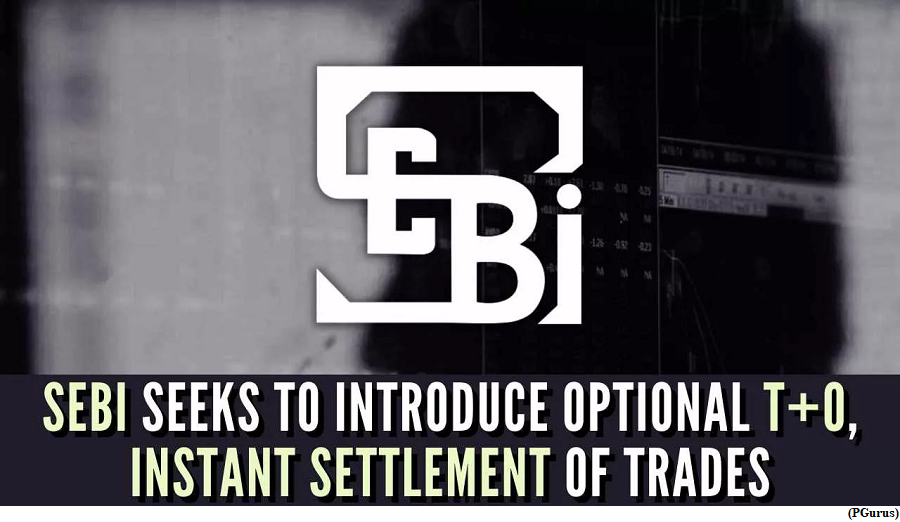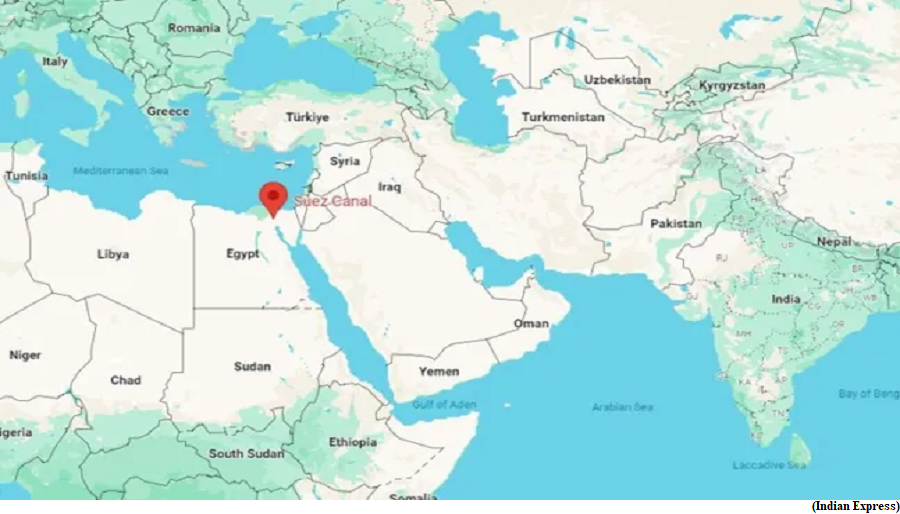T+0, instant settlement cycle (GS Paper 3, Economy)

Why in news?
- The Securities and Exchange Board of India (SEBI) has proposed the introduction of a facility for clearing and settlement of funds and securities on T+0 (same day) and instant settlement cycle on an optional basis.
- The facility will be in addition to the existing T+1 (trade plus one day) settlement cycle in the secondary markets for the equity cash segment.
What is the current settlement cycle followed in the securities market?
- SEBI has shortened the settlement cycle to T+3 from T+5 in 2002 and subsequently to T+2 in 2003.
- At present, the settlement of funds and securities happens on the T+1 cycle.
- It was introduced in 2021 in a phased manner and was fully implemented in January 2023. Under it, securities and funds are settled by the next day of the trade.
What has SEBI proposed now?
- It said that for the equity cash segment, in addition to the existing T+1 settlement cycle, a shorter settlement cycle may be introduced as an option. It proposed to implement it in two phases – Phase 1: T+0 Settlement Cycle and Phase 2: Instant Settlement Cycle.
- In Phase 1, an optional T+0 settlement cycle (for trades till 1:30 PM) is envisaged, with settlement of funds and securities to be completed on the same day by 4:30 PM.
- In Phase 2, an optional immediate trade-by-trade settlement (funds and securities) may be carried out. In the second phase, trading will be carried out till 3.30 pm.
- SEBI has suggested that to begin with, T+0 settlement shall be made available in the top 500 listed equity shares based on the market capitalisation. This will be done in three tranches of 200, 200, and 100, from lowest to highest market cap.
- The surveillance measures applicable in the T+1 settlement cycle will also apply to securities in the T+0 settlement cycle. Securities under the trade-for-trade settlement will not be permitted for T+0.
What would be the features of the proposed T+0 settlement mechanism?
- It is observed that a high percentage of retail investors bring upfront funds and securities before placing an order.
- For the period June 2023, for around 94 per cent of delivery-based trades with value up to Rs 1 lakh per transaction, investors made early pay–in of funds and securities.
- An instant settlement mechanism would enable instant receipt of funds and securities, vis-a-vis existing pay-out on T+1 day. It would eliminate the risk of settlement shortages since both funds and securities will be required to be available before placing the order.
- It will strengthen investor protection by enhancing the control of the investor over the securities and funds as funds and securities would be credited into the client’s account directly for those who are trading through blocked amounts using the UPI facility (UPI Clients).
- Providing the option for instant settlement will help establish Indian equities as an asset class with the features of resilience, low cost and time for transaction, superior in all ways to emerging claimants of alternative asset classes.
What are the benefits of the new mechanism?
- For clients, the option is expected to provide flexibility in terms of faster pay-out of the funds against the securities to the sellers and faster pay-out of securities against the funds to the buyers.
- For the securities market ecosystem, the option is expected to provide flexibility in terms of faster pay-out of the funds against the securities to the sellers and faster pay-out of securities against the funds to the buyers.
Red Sea attacks, Panama Canal drought, impact on global trade
(GS Paper 3, Economy)
Why in news?
- Amid the recent attacks on ships passing through the Red Sea trade route in West Asia, one ship on its way to India was struck by a drone attack on Chemical tanker MV Chem Pluto, roughly 200 nautical miles (370 km) off the coast of Gujarat.
- Two crucial choke points; the Suez Canal and the Panama Canal threaten to disrupt over a third of global trade.
- This comes amid already slowing demand in the West and a property crisis in China that led the World Trade Organization (WTO) to lower its goods trade forecast by as much as 50 per cent.

Details:
- The Red Sea attacks have been carried out by Yemen-based Houthi rebels, who have been in a civil war with the Yemeni government for about a decade.
- They say the attacks are to protest Israel’s military offensive in Gaza.
- While the US-led maritime security coalition has swiftly announced countermeasures, indicating the importance of the route for world trade.
What do the ongoing Red Sea and Panama Canal crises mean for world trade?
- Currently, two important shipping routes are facing blockages. While the Bab-el-Mandeb Strait that leads to the Suez Canal in the Red Sea region connects Asia to Europe, the 100-year-old Panama Canal connects the Atlantic and Pacific Oceans.
- Both these routes are among the busiest in the world and a blockage results in forcing global shipping lines to take longer alternate routes, pushing up freight rates.
- The disruption at the Red Sea route, for instance, is estimated to push the prices of Indian agricultural products by 10 to 20 per cent, as shipments would be routed through the Cape of Good Hope.
- This comes at a time when much of the West is witnessing higher interest rates to curb inflation. Higher prices could further fuel demand concerns for global and Indian exporters.
Why is trade via the Panama Canal slowing?
- Shipping via the Panama Canal has dropped by over 50% due to drought conditions at the 51-mile stretch. Due to the shortage of water, ships moving from Asia to the US are being forced to use the Suez Canal, which takes six more days compared to the Panama Canal.
- Moreover, Panama is facing its driest rainy season in decades, raising fears of prolonged canal bottlenecks.
- According to S&P Global, rather than taking longer voyages through alternative routes, LNG vessels are participating in pricey auctions to expedite their transit through the Panama Canal.
Why are oil flows to India immune to attack in the Red Sea?
- With global shipping majors such as Maersk avoiding transit through the Red Sea, global oil and petroleum product flows through the maritime channel have declined by over 50 per cent in December from their regular levels.
- However, India has not faced a disruption in its Russian oil imports. Russia is perceived as Iran’s ally and as the Houthi rebels are widely believed to be backed by Iran, its tankers have been passing through.
- In a recent report, Goldman Sachs said that it does not expect the disruptions in the Red Sea to significantly impact international oil prices as global oil production is unlikely to be directly affected.
How have the Red Sea attacks impacted freight rates?
- Ever since the attacks along the Bab-el-Mandeb Strait began earlier this month, global shipping firms have begun imposing war risk surcharges over and above the normal freight rates.
- Indian exporters said that freight rates for Indian shipments headed to Europe and Africa could surge as much as 25-30 per cent if the ongoing security concern along the Red Sea trade route continues.
- This is troubling, as the European Union is one of India’s second-largest export destinations.
- Slowing demand from the region has impacted India’s labour-intensive sectors, such as textiles, gems and jewellery exports.



